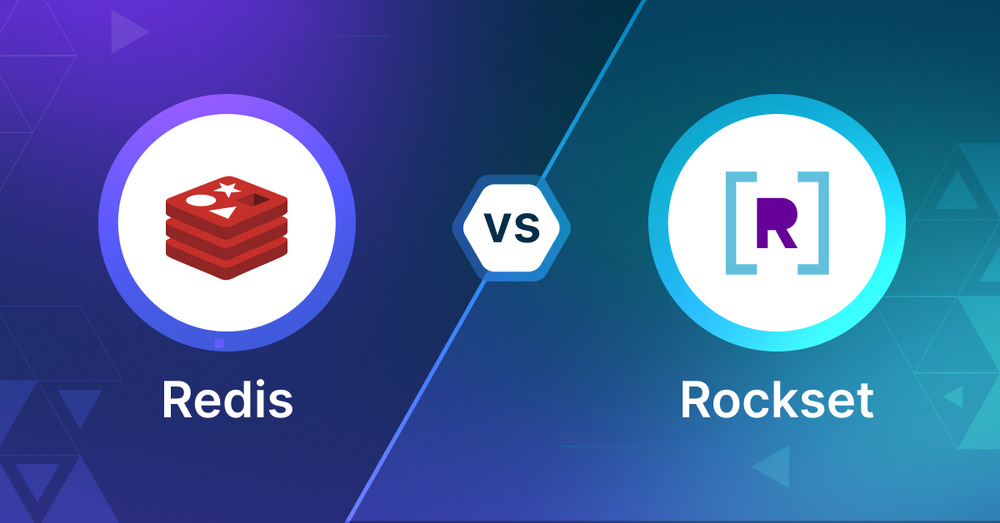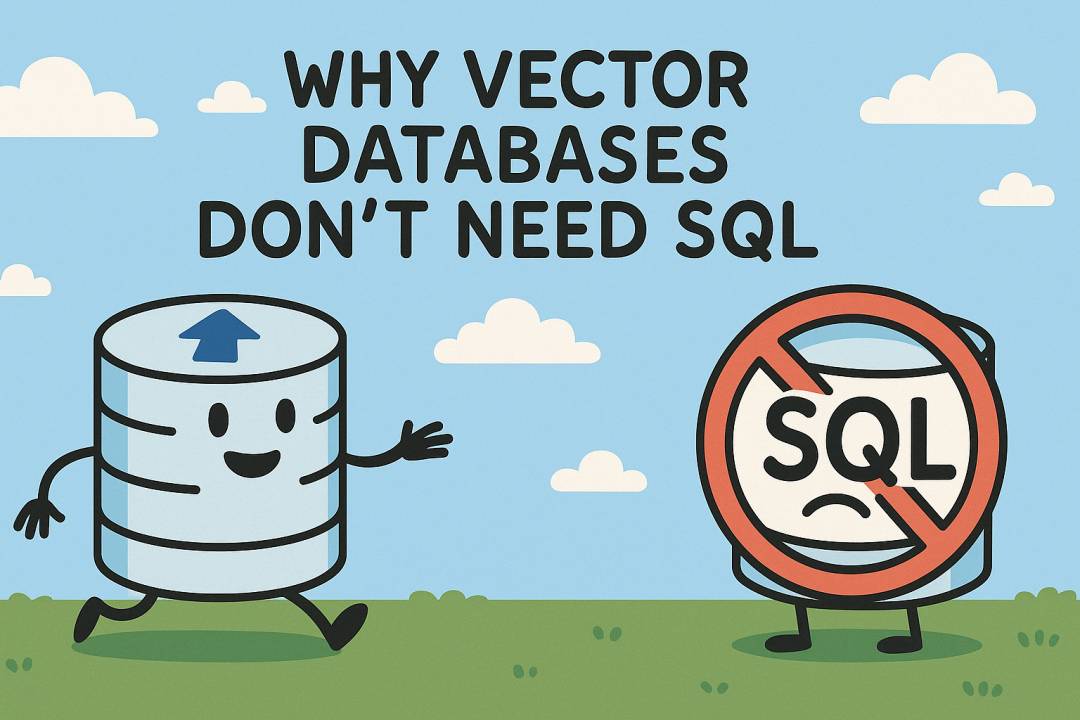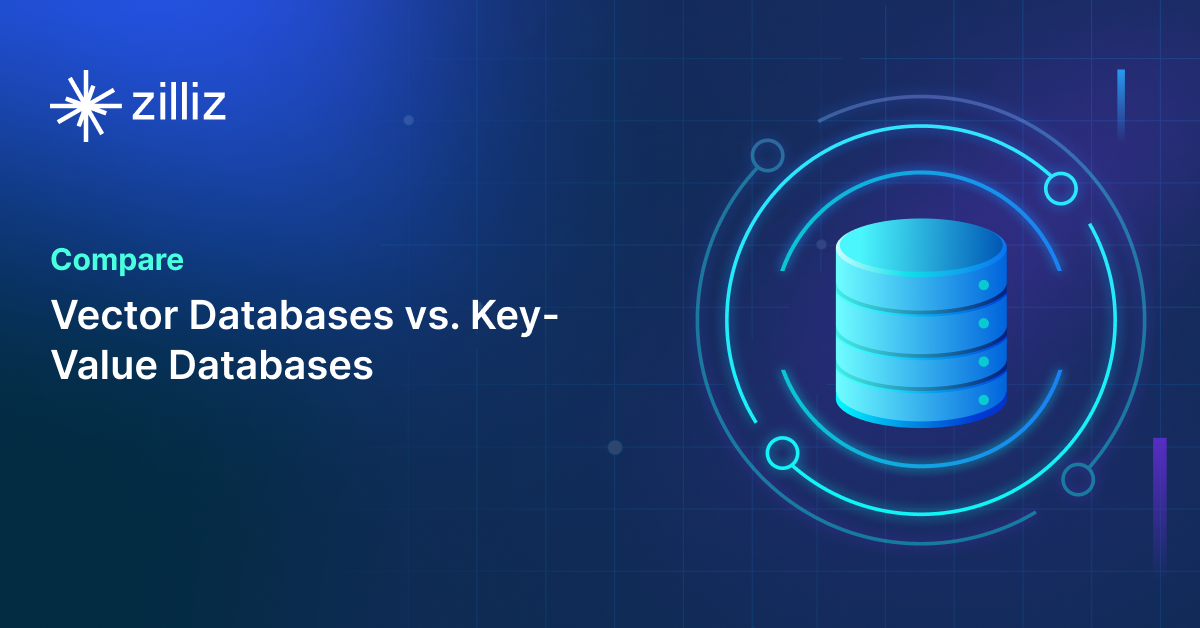Redis vs Rockset: Choosing the Right Vector Database for Your Needs

As AI and data-driven technologies advance, selecting an appropriate vector database for your application is becoming increasingly important. Redis and Rockset are two options in this space. This article compares these technologies to help you make an informed decision for your project.
What is a Vector Database?
Before we compare Redis and Vald, let's first explore the concept of vector databases.
A vector database is specifically designed to store and query high-dimensional vectors, which are numerical representations of unstructured data. These vectors encode complex information, such as the semantic meaning of text, the visual features of images, or product attributes. By enabling efficient similarity searches, vector databases play a pivotal role in AI applications, allowing for more advanced data analysis and retrieval.
Common use cases for vector databases include e-commerce product recommendations, content discovery platforms, anomaly detection in cybersecurity, medical image analysis, and natural language processing (NLP) tasks. They also play a crucial role in Retrieval Augmented Generation (RAG), a technique that enhances the performance of large language models (LLMs) by providing external knowledge to reduce issues like AI hallucinations.
There are many types of vector databases available in the market, including:
- Purpose-built vector databases such as Milvus, Zilliz Cloud (fully managed Milvus), and Weaviate
- Vector search libraries such as Faiss and Annoy.
- Lightweight vector databases such as Chroma and Milvus Lite.
- Traditional databases with vector search add-ons capable of performing small-scale vector searches.
Redis is an in-memory database with vector search as an add-on and Rockset is a search and analytics database. This post compares their vector search capabilities.
Redis: Overview and Core Technology
Redis was originally known for its in-memory data storage and has added vector search capabilities through the Redis Vector Library which is now part of Redis Stack. This allows Redis to do vector similarity search while keeping its speed and performance.
The vector search in Redis is built on top of its existing infrastructure, using in-memory processing for fast query execution. Redis uses FLAT and HNSW (Hierarchical Navigable Small World) algorithms for approximate nearest neighbor search which allows for fast and accurate search in high dimensional vector spaces.
One of the main strengths of Redis vector search is that it can combine vector similarity search with traditional filtering on other attributes. This hybrid search allows developers to create complex queries that consider both semantic similarity and specific metadata criteria, so it’s versatile for many AI driven applications.
The Redis Vector Library provides a simple interface for developers to work with vector data in Redis. It has features like flexible schema design, custom vector queries and extensions for LLM related tasks like semantic caching and session management. This makes it easier for AI/ML engineers and data scientists to integrate Redis into their AI workflow, especially for real-time data processing and retrieval.
Rockset: Overview and Core Technology
Rockset is a real-time search and analytics database for structured and unstructured data, including vector embeddings. Its sweet spot is ingesting, indexing and querying data in real-time so it’s great for applications that need up-to-the-second insights. Rockset supports both streaming and bulk data ingestion, can process high velocity event streams and change data capture (CDC) feeds in 1-2 seconds.
One of Rockset’s key features is Converged Indexing built on mutable RocksDB. This allows for in-place updates of vectors and metadata so it’s super efficient for scenarios where data changes frequently. Rockset can handle documents up to 40MB and supports vector dimensionality up to 200,000 so it’s good for a wide range of vector embedding use cases.
Rockset has vector search built into the core. It supports K-Nearest Neighbors (KNN) and Approximate Nearest Neighbors (ANN) search methods and uses a distributed FAISS index for scalability. Rockset is algorithm agnostic, so you can choose your own search implementation. The cost-based optimizer can dynamically choose between KNN and ANN search methods for optimal performance.
What’s unique about Rockset for vector search is the Converged Index which combines search, ANN, columnar and row indexes into one. This means you can handle a wide range of query patterns out of the box. Rockset also supports metadata filtering and hybrid search. The optimizer will choose the most efficient query path. Can search across multiple ANN fields, supports multi-modal models and has both SQL and REST APIs for query interface.
Key Differences: Redis vs Rockset for Vector Search
When choosing between Redis and Rockset for vector search you need to understand the differences. Both are powerful but they have different strengths for different use cases. Let’s compare them across several key areas to help you make a decision.
Search Methodology
Redis uses FLAT and HNSW algorithms for approximate nearest neighbor search. This is fast and accurate, especially for high dimensional vector spaces. Redis is good at combining vector similarity search with attribute filtering, allows complex queries.
Rockset supports K-Nearest Neighbors (KNN) and Approximate Nearest Neighbors (ANN) search methods. It uses a distributed FAISS index for scalability and is algorithm-agnostic. You can choose your own search implementation. Rockset’s cost-based optimizer can switch between KNN and ANN for best performance.
Data
Redis, an in-memory data store, now has vector search capabilities through its Vector Library. It’s good at real-time data and can handle structured and unstructured data types.
Rockset is for real-time search and analytics across structured and unstructured data, including vector embeddings. It can ingest and process high velocity event streams and change data capture feeds in real-time, so it’s good for applications that need up-to-the-second insights.
Scalability and Performance
Redis uses in-memory processing for fast query execution, which is good for applications that need low latency responses. It can scale horizontally for large datasets.
Rockset uses a distributed architecture and Converged Indexing for scalability. It can handle documents up to 40MB and vector dimensionality up to 200,000 so it’s good for a wide range of vector embedding use cases.
Flexibility and Customization
Redis has flexible schema and custom vector queries. It has extensions for LLM related tasks like semantic caching and session management which is good for AI/ML workflows.
Rockset’s Converged Index combines search, ANN, columnar and row indexes so it can handle various query patterns out of the box. It supports multi-modal models and has both SQL and REST APIs for querying.
Integration and Ecosystem
Redis has a large ecosystem and integrates well with many tools and frameworks, especially in caching and real-time data processing.
Rockset is for real-time analytics and search, has strong integrations for data streaming and change data capture systems. Its SQL interface is familiar to many developers and data analysts.
Ease of Use
Redis is known to be developer friendly, easy to set up and operate. But optimizing for complex use cases requires deeper knowledge of its internals.
Rockset simplifies complex data operations with its SQL interface and automatic schema inference. Its managed service reduces operational overhead.
Cost
Redis can be cost effective for some use cases, especially when using its in-memory for high performance scenarios. But scaling memory can increase costs.
Rockset’s pricing is based on compute and storage usage. Its ability to handle updates efficiently and optimized query execution can save costs for some workloads.
Security
Both Redis and Rockset have robust security features, encryption, authentication and access control. Consider your application’s security requirements and your team’s familiarity with each system’s security model.
When to Choose Each Technology
When to use Redis
Redis is best for applications that need super low latency vector search operations, especially with real time data. It’s great for scenarios where you need to combine vector similarity search with attribute filtering, like recommendation systems, content matching or image similarity search. Redis is good for use cases that benefit from in-memory processing, like session management, caching and real time analytics. Use Redis when speed is your priority and your data fits in memory or can be distributed across a cluster.
When to use Rockset
Rockset is best for applications that need real time search and analytics on changing data, especially when you have a mix of structured and unstructured data types. It’s great for use cases that require complex queries across multiple data types, including vector embeddings. Use Rockset when you need to search vectors along with full text search, aggregations or joins on large datasets. It’s also good for scenarios where you need to ingest and query high velocity data streams in real time, like log analytics, user behavior analysis or IoT data processing.
Summary
Redis is fast in memory and hybrid search, great for low latency real time applications. Rockset is good at handling multiple data types and complex queries in real time, with strong analytics alongside vector search. Your choice between the two should be based on your requirements: data types, query complexity, latency and scalability. Use Redis for speed and simple data models, Rockset for complex, changing data with analytics. Ultimately it’s all about aligning the technology to your project’s needs and performance goals.
While this article provides an overview of Redis and Rockset, it's key to evaluate these databases based on your specific use case. One tool that can assist in this process is VectorDBBench, an open-source benchmarking tool designed for comparing vector database performance. Ultimately, thorough benchmarking with specific datasets and query patterns will be essential in making an informed decision between these two powerful, yet distinct, approaches to vector search in distributed database systems.
Using Open-source VectorDBBench to Evaluate and Compare Vector Databases on Your Own
VectorDBBench is an open-source benchmarking tool designed for users who require high-performance data storage and retrieval systems, particularly vector databases. This tool allows users to test and compare the performance of different vector database systems such as Milvus and Zilliz Cloud (the managed Milvus) using their own datasets and determine the most suitable one for their use cases. Using VectorDBBench, users can make informed decisions based on the actual vector database performance rather than relying on marketing claims or anecdotal evidence.
VectorDBBench is written in Python and licensed under the MIT open-source license, meaning anyone can freely use, modify, and distribute it. The tool is actively maintained by a community of developers committed to improving its features and performance.
Download VectorDBBench from its GitHub repository to reproduce our benchmark results or obtain performance results on your own datasets.
Take a quick look at the performance of mainstream vector databases on the VectorDBBench Leaderboard.
Read the following blogs to learn more about vector database evaluation.
Further Resources about VectorDB, GenAI, and ML
- What is a Vector Database?
- Redis: Overview and Core Technology
- Rockset: Overview and Core Technology
- Key Differences: Redis vs Rockset for Vector Search
- **When to Choose Each Technology**
- Summary
- Using Open-source VectorDBBench to Evaluate and Compare Vector Databases on Your Own
- Further Resources about VectorDB, GenAI, and ML
Content
Start Free, Scale Easily
Try the fully-managed vector database built for your GenAI applications.
Try Zilliz Cloud for FreeKeep Reading

Why AI Databases Don't Need SQL
Whether you like it or not, here's the truth: SQL is destined for decline in the era of AI.

Vector Databases vs. Key-Value Databases
Use a vector database for AI-powered similarity search; use a key-value database for high-throughput, low-latency simple data lookups.

Empowering Innovation: Highlights from the Women in AI RAG Hackathon
Over the course of the day, teams built working RAG-powered applications using the Milvus vector database—many of them solving real-world problems in healthcare, legal access, sustainability, and more—all within just a few hours.
The Definitive Guide to Choosing a Vector Database
Overwhelmed by all the options? Learn key features to look for & how to evaluate with your own data. Choose with confidence.